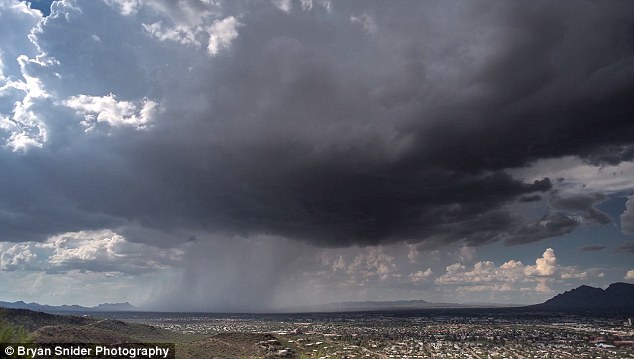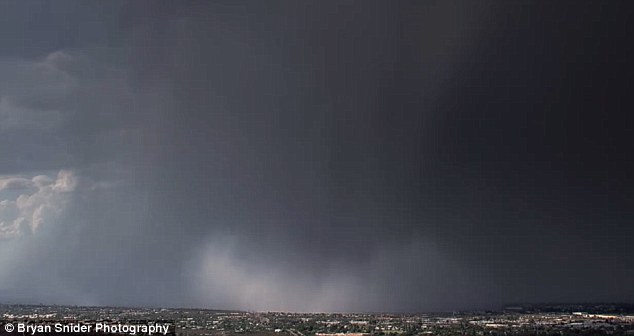
Like turning on a giant tap in the sky, these extremely localised downdrafts of air and rain can rapidly drench an area.
Now one cameraman has managed to capture this stunning weather phenomenon in action over the weekend in Tuscon, Arizona.
The time-lapse, taken by Bryan Snider, reveals just how much water can be dumped by a microburst in just a few seconds.
'A time lapse of a strong thunderstorm that dropped a couple of wet microbursts,' Mr Snider says in his video description.
'One in particular was captured really well in the time-lapse thanks to the sun peeking out to the west.
'Notice how the ball of rain falls from the sky and starts separating before hitting the ground
'Once it hits the ground you can see the power of microburst as it expands similar to the ripple you would see when you drop a stone in water.'
Microbursts take place when cooled, heavier air plunges down towards the ground at speeds of 60 mph.
The blast of air has nowhere to go but out, creating winds that can be 150 mph, often causing tree and building damage.
One the huge rain shaft accelerates toward ground level, it spreads out violently hitting the Earth.
'The fast descent of air is initiated by several processes - including the drag created by a large, sinking mass of rain water and hail,' Capital Weather Gang's severe storm expert Jeff Halverson told the Washington Post.
'Additionally, evaporation of rain drops and melting of hail cool the air, increasing its density thus accelerating its descent.
'It is very common to observe wet microbursts embedded in pockets of heavy rain and hail.'




Reader Comments
to our Newsletter